by Giorgio Cafiero and Andreas Krieg
Yemen’s dominant Zaydi Houthi insurgent group—Ansarullah, which in much reporting on the Yemeni crisis is often referred to as “the Houthis”—has demonstrated major advancements in drone and missile capabilities. Ansarullah’s recent attacks against the Saudi-led coalition and strategic targets within the kingdom illustrate the increasing sophistication of its military operations. In recent years, Ansarullah has developed into one of Iran’s most potent surrogates, receiving training, material, and information support from Tehran and its elite Islamic Revolutionary Guard Corps (IRGC)’s oldest franchise, Hezbollah. Yet narratives merely labelling Ansarullah as ‘Yemen’s Hezbollah’ are too simplistic. Despite similar ideological narratives and information operations, the Yemeni militia is far from being an Iranian franchise.
The Saudi government maintains that Iran is arming Ansarullah with the aim of transforming the Zaydi Houthi insurgency into a replica of Hezbollah in order to weaken Saudi Arabia, other Gulf Cooperation Council (GCC) member states, and their Western allies. Officials in Riyadh have also alleged that Tehran is sending Hezbollah military trainers to Yemen, and certain sources have reported that members of the Lebanese Shia group have fought alongside Ansarullah militants in battles along the Yemeni-Saudi border.
In 2016, Yemen’s internationally recognized government, led by President Abdrabbuh Mansur Hadi, accused Hezbollah of intervening in the Arabian country’s civil war. Images of Ansarullah’s leadership meeting with Hezbollah Secretary-General Hassan Nasrallah in Lebanon served only to reaffirm suspicions of the Lebanese militia’s role in Yemen. They also contributed to a popular Saudi narrative that Ansarullah is basically a replica of Hezbollah and that the Houthi insurgents represent just another leg of Iran’s surrogate network.
In fact, the Houthi movement emerged throughout the 1990s as an indigenous Yemeni organization supporting disenfranchised communities of Zaydi Shia in their drive to create a Zaydi imamate. Despite the sectarian dimension of Ansarullah’s narrative, the movement does not have any natural links with Iran’s ‘Islamic Revolution’ and only received assistance from Tehran and Lebanese Hezbollah after 2014. It was only then that Tehran realized the powerful potential of the Houthi militia as a means to attack the Saudi kingdom at its “soft underbelly,” at low cost and with plausible deniability.
Ever since Riyadh began direct military intervention in Yemen in March 2015, the strategic narrative of the Saudi-led coalition, tailored towards a Western audience, was that the kingdom was fighting to prevent a Hezbollah-like Houthi ‘terror state’ along Saudi Arabia’s southern border. This talking point has been propagated extensively in Washington in a Saudi effort to gain greater sympathy from both the Obama and Trump administrations, plus lawmakers on both sides of the aisle, for their anti-Houthi campaign. Such efforts have paid off well with this administration. In December 2017, six months before Trump withdrew Washington from the Iranian nuclear deal, then-U.S. ambassador to the UN Nikki Haley delivered a speech that provided purported evidence of Iranian weapons being used by the Houthis against Saudi Arabia as she was seeking to garner global support for the administration’s anti-Iranian agenda.
Saudi Arabia, which is leading a crumbling Arab military coalition in Yemen against Ansarullah, has vowed not to allow the Iran-allied militia to emerge as the country’s replica of Hezbollah. In fact, when Saudi Arabia’s previous ambassador to Washington, Khalid bin Salman, accused the Islamic Republic of sending Hezbollah military trainers to Yemen to help strengthen the Houthis, he put out a series of tweets alleging that the Arab coalition “uncovered a cache of evidence against Al Houthis, revealed a Hezbollah operative training, advising them on asymmetric warfare, and showed background portrait of Iran ‘Supreme Leader’ on Militia’s computer.” The Saudi ambassador accused Iran’s government of having “subcontracted” Ansarullah to Hezbollah, allegedly a sign that Tehran’s “proxies work in tandem to undermine regional stability and prolong the suffering of countries they are involved in.”
In November 2017, Saudi Foreign Minister Adel al-Jubeir boldly accused Lebanon of declaring war on Saudi Arabia shortly after a ballistic missile from Yemen targeted Riyadh International Airport before the Kingdom’s Patriot defense system shot it down. Jubair asserted, “This was an Iranian missile… launched by Hezbollah.”
It is legitimate to question the veracity of such claims. Sources maintaining that Hezbollah is extremely influential in Yemen are often of questionable credibility or pushing a political agenda that has much to gain from convincing Western statesmen that Saudi Arabia’s fight against Houthi insurgents mirrors Israel’s struggle against Hezbollah. Yet it would disingenuous to fully dismiss Hezbollah’s role in Yemen as merely propaganda from the White House, Riyadh, or Abu Dhabi.
In Yemen—like in Iraq, Syria, and allegedly Bahrain—Hezbollah has served as Iran’s most senior surrogate, serving as the backbone of the Islamic Republic’s regional “axis of resistance.” Both in terms of hard and soft power, Hezbollah has grown from a mere franchise of Iran’s IRGC in the early 1980s into a self-sustaining strategic proxy that enjoys considerable autonomy from its patron’s command and control. Hezbollah has developed into an important node within Tehran’s vast surrogate network, providing direct franchises such as Kata’ib Hezbollah, as well as indirect surrogates such as the Houthis, with operational support.
Notwithstanding ideological links between Ansarullah and Hezbollah, the main crux of their relationship appears to be operational and rooted in pragmatism. To bog down the Arab coalition in Yemen, the Houthis have sought out training assistance, technological support, and operational direction from Hezbollah to achieve their objectives on the ground. For Hezbollah, the Yemeni civil war has represented an opportunity to humiliate the Saudis at a time in which the Lebanese organization is also struggling against Riyadh’s proxies within Lebanon.
At the risk of exaggerating Hezbollah’s role in the Yemeni civil war, it goes without saying that the Lebanese force, which Tehran has bankrolled for decades, has contributed to Houthi battlefield successes against the Saudi-led coalition. The advancements in Houthi missile and drone capabilities all highlight the extent to which Hezbollah has made a difference in the conflict, which has seen Ansarullah assume de facto control of northern Yemen. Nonetheless, Ansarullah is more than just a mere Iranian franchise outfit. Unlike Hezbollah, Ansarullah—as a homegrown movement—would continue to fight, albeit less effectively, even if its link to Tehran were severed.
Andreas Krieg is an assistant professor at the School of Security and Institute for Middle Eastern Studies at King’s College London.

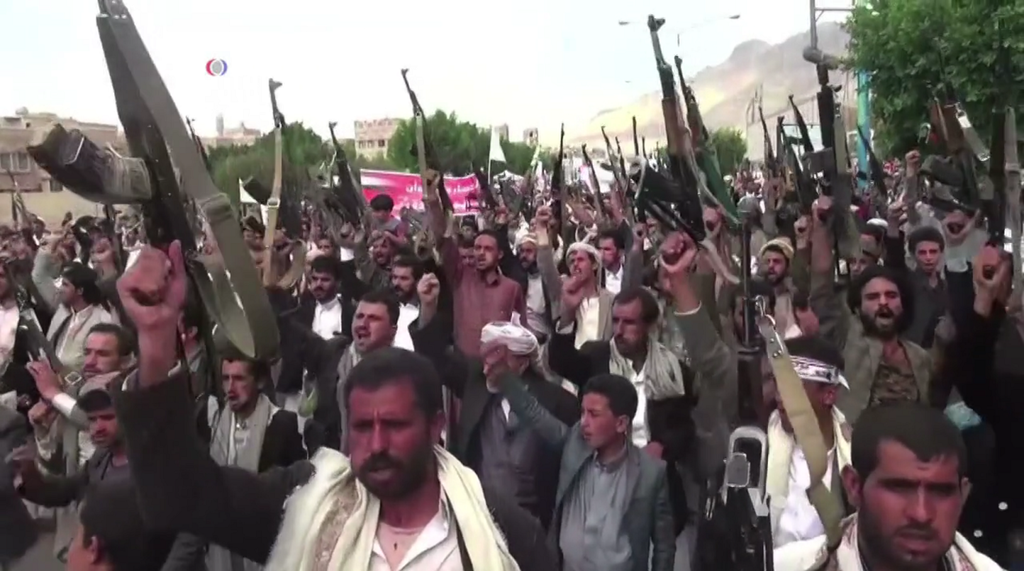
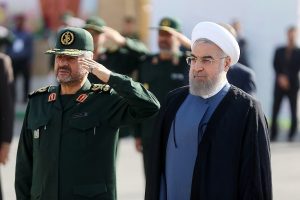
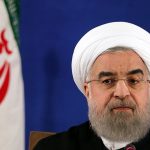
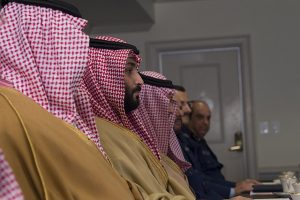
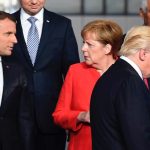
re: “Tehran and its elite Islamic Revolutionary Guard Corps (IRGC)’s oldest franchise, Hezbollah”
According to the CIA World Factbook–
Lebanon elections:
last held on 6 May 2018 (next to be held in 2022)
election results:
percent of vote by coalition – NA;
seats by coalition – Strong Lebanon Bloc (Free Patriotic Movement-led) 25; Future Bloc (Future Movement-led) 20; Development and Liberation Bloc (Amal Movement-led) 16; Loyalty to the Resistance Bloc (Hizballah-led) 15; . . .etc.for eight more
So of the dozen or so political blocs in Lebanon, Hezbollah in the recent election ranks fourth with 15 seats, with the larger three blocs holding 25, 20 and 16.
Therefore the Times of Isreal reported in January a new government: “The breakthrough comes after rival factions worked out a compromise allowing representation of Sunni lawmakers backed by the powerful Shiite group Hezbollah. . .The government also sees an increase in the number of ministries affiliated with Hezbollah.” . . .Obviously Hez is bit more than an “IRGC franchise.”
The IRGC kicked the shit of Saddam’s inept army and ultimately kicked them out of southwest of Iran with the rest of the world supporting Saddam with arms, including chemical weapons, and with his financial needs. Not only Saddam was embarrassed in that theater since he couldn’t do a damn thing while Iran was going through a rough time with its internal revolution, his supporters were also disappointed in him so much that the disappointment of his supporters became an impetuous for attacking Iraq, taking him down and finally executing him. The world hasn’t forgotten that scenario which it became a major factor for many regional states and countries to be fearful of the Iranians and IRGC.
If the military wing of Hezbollah in Lebanon has been trained by the IRGC and were able to defend Southern region of their country by kicking the so called mighty Israelis army out of Lebanon in 2006! What’s wrong with that!
Hopefully the Huthies have learned from that experience and follow the model. The result could be very surprising when the M-butcher of-Saudi (MbS) is ultimately taken down by his own supporters!